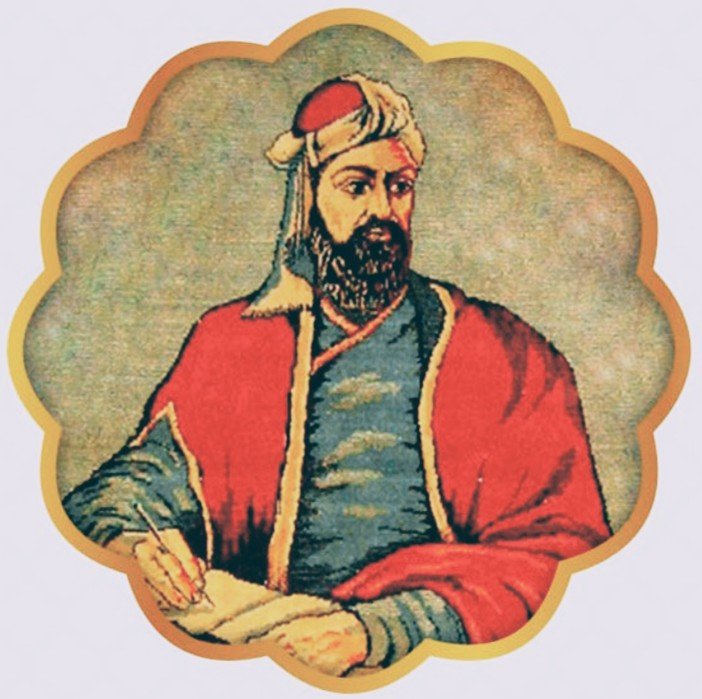The great Iranian Sufi, mystic, literary figure, astrologer, and poet, Hakim Nizami Ganjavi is one of the world’s best ballad poets. He was the master of allegorical poetry who was born in an old Iranian city named Ganja between 530 and 540AH. While some think that his ancestral hometown was Iraq or the city of Qom in Iran or the area of Tafrish nearby Qom; from where his father Yusuf migrated to Ganja where Nizami was born. He spent his whole life in Ganja.
It is clear from Nizami’s poems that his importance was not merely due to his poetry. He was a great lover of literature, fiction, art, and history from his early youth. He worked hard in studying science therefore he became an expert in astronomy. He was also perfect in intellectual sciences, especially in philosophy, logic, mathematics, and astronomy, and he had complete expertise in other Islamic sciences such as the Qur’an, jurisprudence, and hadiths.
The Atabak dynasty was ruling over Iran during the Nizami period. The dependence of Nizami on Sufism and mysticism made his life more pious and secluded, and because of this characteristic, he always stayed away from the courts of sultans. Nizami Ganjavi has followed the Ash’ari school of thought in many important religious issues and beliefs. He, despite adhering to the principles of Islam, was fanatically supporting Iran and Iranian ethnicity.
His most important poetic work is “Panjganj”(five reservoirs) or “Khamsa”(five collections), which contains about 20,000 verses. It consists of Makhzan-al-Asrar (reservoir of secrets), Laili and Majnoon, Khosrow and Shirin, Haft Pekar (seven figures), and Iskandarnameh (description of Alexander), written in Iraqi poetic style.


Director Cultural Center, Islamic Republic of Iran-Karachi.
Nizams’ oldest Masnavi (couplet poem) is Makhzan al-Asrar (reservoir of secrets), while the best of his poetic collections is Khosrow and Shirin.
“Masnavi Makhzan al-Asrar” contains 2260 verses. This “massive” was compiled around the year 570AH, dedicated to Fakhr al-Din Bahram Shah bin Dawood (died 622 AH). This book contains 20 chapters including many ascetic and mystical sayings. In each chapter, after the description of the subject of the main title, a short but comprehensive content, containing a pleasant story has been narrated for greater impact.
“Masnavi” by Khosrow and Shirin contains 6500 verses. This massive is the story of Iranian Sassanid king Khosrow Parviz’s love for Shirin Shahdukht of Armenia which was finished in 576 AH and was dedicated by the poet to the king Atabak Shamsuddin Muhammad Jahan Pahlwan bin Eld Gaz (567-581) AH.
Masnavi’s “Laili and Majnoon” contains 4500 verses, which were written in the year 584 AH and dedicated to the king Sharvanshah. This massive is a poetic translation of the burning and melting love story of Majnoon (Qais Ameri) from the Bani Amer tribe with Laili daughter of Saad, which is one of the famous stories of the ancient Arabic period.
The Masnavi of Haft Pikar or Haft Gonbad or Bahramnameh with 5136 verses was composed in the year 593AH and dedicated to Ala-ud-din Arslan, the king of Maragheh. This is one of the Persian classical stories related to the Sassanid period that describes the romantic relationship of king Bahram Gure (420-348 AD) with seven daughters of the kings of the seven regions; for each one, Bahram built a dome of a special color, and each day of the week he had to be the guest of one princess. Thus, it tells the story of each princess.
Masnavi Iskandarnameh contains 10,500 verses and is compiled in two parts named; Sharafnameh and Iqbalnameh. In the first part, he introduces Alexander the great as a tremendous conqueror, while in the second part, he introduces him as a sage and a wise prophet. This Masnavi was completed in 599AH and named after Nusratuddin Abu Bakr Mohammad Jahan Pahlavan.
Nizami is one of the poets who should be considered one of the pillars of Persian poetry and one of the best masters of this language. He is one of those poets who, like Ferdowsi and Saadi, was able to create and follow a special literary poetic style and method. Although storytelling in the Persian language was not started by Nizami, he is the only poet who was able to bring allegorical poetry to the highest level of accomplishment until the end of the 6th century (AH).
He is among those poets who could choose appropriate words and phrases to create unique combinations to invent novel and pleasing picturesque meanings and themes in Persian poetry. He has no equal in depicting accurate and detailed descriptions of landscapes, nature, and people with the power of imagination, using new pleasant similes and metaphors.
Although Nizami’s works can be criticized in terms of the lengthy topics, playing with words, using scientific and philosophical terms, many Arabic combinations, and the complexity of the meanings of some verses, the merits of his poetry are so much that he should be considered one of the greatest poets of Iran and the Persian language.
Nizami is the greatest public poet of Persian literature. We dare to say that he is unique in composing moments of happiness, his language is sweet and his words are soft and gentle, and his speech is pleasant. In the same way that he could not escape from the popular poetic style in recounting epic moments, he has unconsciously given a lyrical color to his epic poems.
The great poet of the 6th century (AH) considers himself to adhere to ethics and Islamic values therefore, unlike many poets and composers, he never spoke about open topics in his poems.
Every year in Iran, 12th March is named after Hakim Nizami Ganjavi, the great Iranian poet, and on this occasion, literary gatherings of poets are held inside and outside of Iran.
On this occasion a literary gathering was held at the Cultural Center of the Islamic Republic of Iran-Karachi on Saturday, March 11, with the participation of famous poets from Sindh province who discussed the personality and poetic style of this great Iranian poet.















